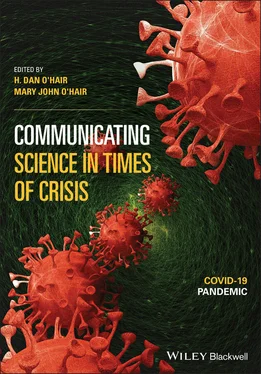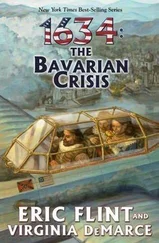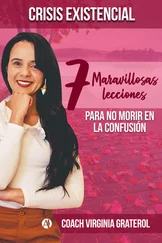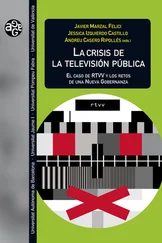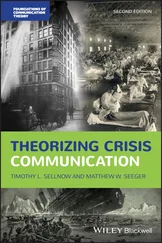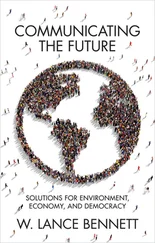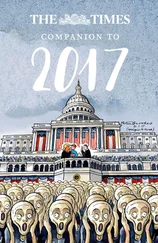92 Grimes, D. R. (2016). Correction: On the viability of conspiratorial beliefs. PLoS ONE, 11(3), e0151003. https://doi.org/10.1371/journal.pone.0151003
93 Guadagno, R. E., Rempala, D. M., Murphy, S., & Okdie, B. M. (2013). What makes a video go viral? An analysis of emotional contagion and internet memes. Computers in Human Behavior, 29(6), 2312–2319. https://doi.org/10.1016/j.chb.2013.04.016
94 Guarda, R. F., Ohlson, M. P., Romanini, A. V., & Martínez-Ávila, D. (2018). Disinformation, dystopia and post-reality in social media: A semiotic-cognitive perspective. Education for Information, 34(3), 185–197. https://doi.org/10.3233/EFI-180209
95 Hameleers, M., Powell, T. E., Van Der Meer, T. G. L. A., & Bos, L. (2020). A picture paints a thousand lies? The effects and mechanisms of multimodal disinformation and rebuttals disseminated via social media. Political Communication, 37(2), 281–301. https://doi.org/10.1080/10584609.2019.1674979
96 Hart, J., & Graether, M. (2018). Something’s going on here: Psychological predictors of belief in conspiracy theories. Journal of Individual Differences, 39(4), 229–237. https://doi.org/10.1027/1614-0001/a000268
97 Hastak, M., & Mazis, M. B. (2011). Deception by implication: A typology of truthful but misleading advertising and labeling claims. Journal of Public Policy & Marketing, 30(2), 157–167. https://doi.org/10.1509/jppm.30.2.157
98 Hawes, L. (1975). Pragmatics of analoguing: Theory and model construction in communication. Addison-Wesley.
99 Hill, S. A., Laythe, B., Dagnall, N., Drinkwater, K., O’Keeffe, C., Ventola, A., & Houran, J. (2019). “Meme-spirited”: II. Illustrating the VAPUS model for ghost narratives. Australian Journal of Parapsychology, 19(1), 5–43. https://search.informit.com.au/documentSummary;dn=416415346494840;res=IELHSS
100 Hofstadter, R. (1964). Paranoid style in American politics. Harper’s Magazine, 229(11), 77–86. https://harpers.org/archive/1964/11/the-paranoid-style-in-american-politics
101 Hopper, R., & Bell, R. A. (1984). Broadening the deception construct. Quarterly Journal of Speech, 70(3), 288–302. https://doi.org/10.1080/00335638409383698
102 Humprecht, E. (2019). Where “fake news” flourishes: A comparison across four Western democracies. Information, Communication & Society, 22(13), 1973–1988. https://doi.org/10.1080/1369118X.2018.1474241
103 Huneman, P. & Vorms, M. (2018). Is a unified account of conspiracy thories possible? Argumenta, 3(2), 247–270. https://doi:10.23811/54.arg2017.hun.vor
104 Imhoff, R., & Lamberty, P. (2018). How paranoid are conspiracy believers? Toward a more fine‐grained understanding of the connect and disconnect between paranoia and belief in conspiracy theories. European Journal of Social Psychology, 48(7), 909–926. https://doi.org/10.1002/ejsp.2494
105 Introne, J., Yildirim, I. G., Iandoli, L., DeCook, J., & Elzeeini, S. (2018). How people weave online information into pseudoknowledge. Social Media + Society, 4(3), 1–15. https://doi.org/10.1177/2056305118785639
106 Jang, S. M., Geng, T., Queenie Li, J.-Y., Xia, R., Huang, C.-T., Kim, H., & Tang, J. (2018, July). A computational approach for examining the roots and spreading patterns of fake news: Evolution tree analysis. Computers in Human Behavior, 84, 103–113. https://doi.org/10.1016/j.chb.2018.02.032
107 Jin, F., Wang, W., Zhao, L., Dougherty, E. R., Cao, Y., Lu, C. T., & Ramakrishnan, N. (2014). Misinformation propagation in the age of Twitter. IEEE Computer, 47 (12), 90–94. https://doi.org/10.1109/MC.2014.361
108 Jolley, D., Douglas, K. M., & Sutton, R. M. (2018). Blaming a few bad apples to save a threatened barrel: The system‐justifying function of conspiracy theories. Political Psychology, 39(2), 465–478. https://doi.org/10.1111/pops.12404
109 Kalyanam, J., Velupillai, S., Doan, S., Conway, M., & Lanckriet, G. (2015, August). Facts and fabrications about Ebola: A Twitter based study. KDD 2015. http://eceweb.ucsd.edu/~gert/papers/KDD_BigCHat_2015.pdf
110 Karlova, N. A., & Fisher, K. E. (2013). A social diffusion model of misinformation and disinformation for understanding human information behaviour. Information Research, 18(1), 1–12. http://InformationR.net/ir/18-1/paper573.html
111 Kavanagh, J., & Rich, M. D. (2018). Truth decay: An initial exploration of the diminishing role of facts and analysis in American public life. Rand Corporation.
112 Kearney, M. D., Selvan, P., Hauer, M. K., Leader, A. E., & Massey, P. M. (2019). Characterizing HPV vaccine sentiments and content on Instagram. Health Education & Behavior, 46(2), 37–48. https://doi.org/10.1177/1090198119859412
113 Keeley, B. L. (1999). Of conspiracy theories. Journal of Philosophy, 96(3), 109–126. https://dx.doi.org/10.2139/ssrn.1084585
114 Kim, A., & Dennis, A. R. (2019). Says who? The effects of presentation format and source rating on fake news in social media. MIS Quarterly, 43(3), 1025–1039. https://doi.org/10.25300/MISQ/2019/15188
115 Klein, C., Clutton, P., & Dunn, A. G. (2019). Pathways to conspiracy: The social and linguistic precursors of involvement in Reddit’s conspiracy theory forum. PloS One, 14(11), e0225098. https://doi.org/10.1371/journal.pone.0225098
116 Klein, C., Clutton, P., & Polito, V. (2018, February). Topic modeling reveals distinct interests within an online conspiracy forum. Frontiers in Psychology, 9, 189. https://doi.org/10.3389/fpsyg.2018.00189
117 Kobayashi, K., & Hsu, M. (2017). Neural mechanisms of updating under reducible and irreducible uncertainty. The Journal of Neuroscience, 37(29), 6972–6982. https://doi.org/10.1523/JNEUROSCI.0535-17.2017
118 Kopp, C., Korb, K. B., & Mills, B. I. (2018). Information-theoretic models of deception: Modelling cooperation and diffusion in populations exposed to “fake news.” PloS One, 13(11), e0207383. https://doi.org/10.1371/journal.pone.0207383
119 Koro-Ljungberg, M., Carlson, D. L., Montana, A., & Cheek, J. (2019). Productive forces of post-truth(s)? Qualitative Inquiry, 25(6), 583–590. https://doi.org/10.1177/1077800418806595
120 Lanning, K. (2018). The evolution of grooming: Concept and term. Journal of Interpersonal Violence, 33(1), 5–16. https://doi.org/10.1177/0886260517742046
121 Lantian, A., Muller, D., Nurra, C., & Douglas, K. M. (2017). ‘I know things they don’t know!’: The role of need for uniqueness in belief in conspiracy theories. Social Psychology, 48(3), 160–173. https://doi.org/10.1027/1864-9335/a000306
122 Lantian, A., Muller, D., Nurra, C., Klein, O., Berjot, S., & Pantazi, M. (2018). Stigmatized beliefs: Conspiracy theories, anticipated negative evaluation of the self, and fear of social exclusion. European Journal of Social Psychology, 48(7), 939–954. https://doi.org/10.1002/ejsp.2498
123 Lazer, D. M. J., Baum, M. A., Benkler, Y., Berinsky, A. J., Greenhill, K. M., Menczer, F., Metzger, M. J., Nyhan, B., Pennycook, G., Rothschild, D., Schudson, M., Sloman, S. A., Sunstein, C. R., Thorson, E. A., Watts, D. J., & Zittrain, J. L. (2018). The science of fake news: Addressing fake news requires a multidisciplinary effort. Science, 359(6380), 1094–1096. https://doi.org/10.1126/science.aao2998
124 Leal, H. (2020). Networked disinformation and the lifecycle of online conspiracy theories. In M. Butter & P. Knight (Eds.), Routledge handbook of conspiracy theories (pp. 497–511). Routledge.
125 Leone, M., Madison, M.-L., & Ventsel, A. (2020). Semiotic approaches to conspiracy theories. In M. Butter & P. Knight (Eds.), Routledge handbook of conspiracy theories (pp. 43–55). Routledge.
126 Levine, T. R., Ali, M. V., Dean, M., Abdulla, R. A., & Garcia-Ruano, K. (2016). Toward a pan-cultural typology of deception motives. Journal of Intercultural Communication Research, 45(1), 1–12. https://doi.org/10.1080/17475759.2015.1137079
Читать дальше
